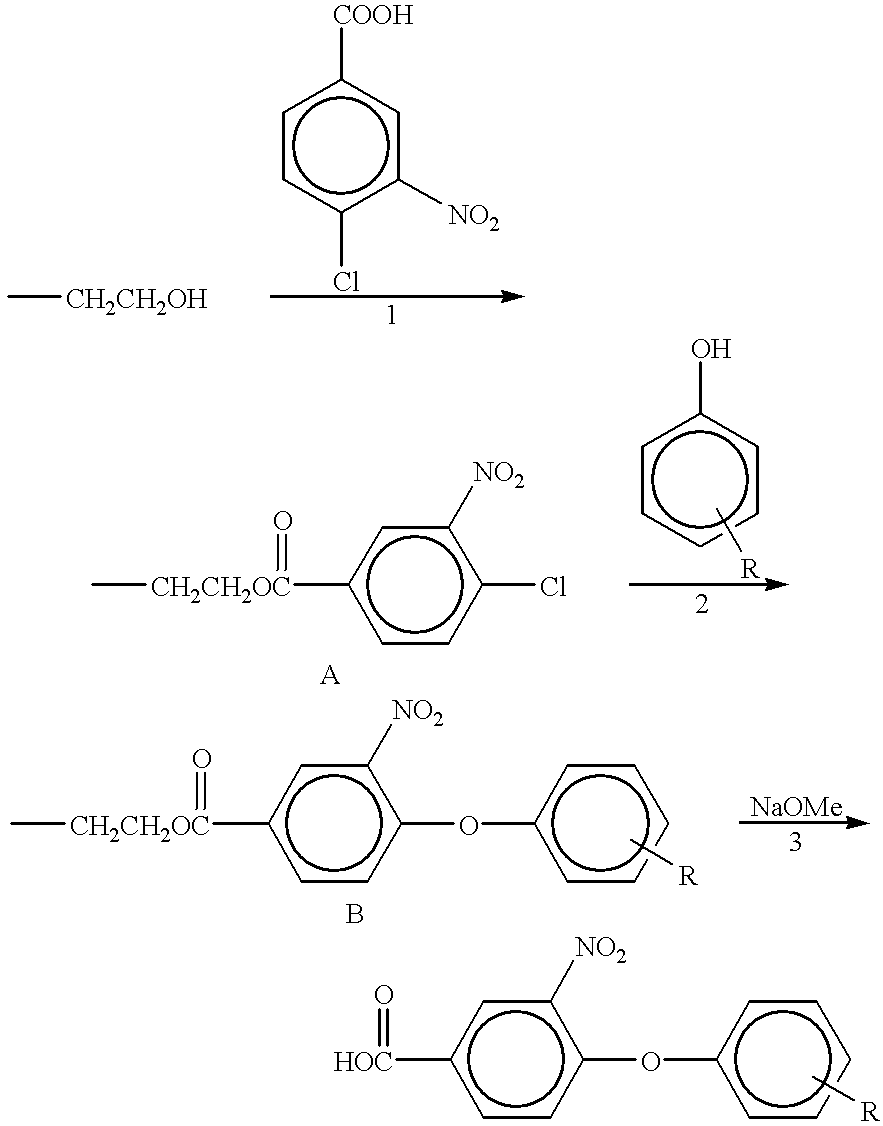Polymers as a support for combinatorial synthesis
a polymer and combinatorial synthesis technology, applied in the field of polymers as a support for combinatorial synthesis, can solve the problems of time-consuming serial analysis of the result and design of the next compound, unreacted starting materials and catalysts are not recoverable, and methods tend to be labor-intensive. the effect of improving efficiency
- Summary
- Abstract
- Description
- Claims
- Application Information
AI Technical Summary
Benefits of technology
Problems solved by technology
Method used
Image
Examples
example 1
[0083] Preparation of the combinatorial support
[0084] A polymer is made using the method of Tomalia above with the following parameters: a core structure of N--[(CH.sub.2).sub.2C(O)].sub.3---, a repeating unit structure of --NHCH.sub.2CH.sub.2N[CH.sub.2CH.sub.2C(-O)].sub.2--, a molecular weight of 28600 (6 generations), and 96 --CH.sub.2CH.sub.2COOCH.sub.3 functional groups on the surface of each polymer. The surface of the polymer is then modified by reacting 50 g polymer with a mixture of 16.5 g NH.sub.2CH.sub.2CH.sub.2CH.sub.3 and 4 g NH.sub.2CH.sub.2CH.sub.2OH in methanol at 45.degree. C. to reduce the number of the reactive sites. NMR and mass spectroscopy are used to monitor the reaction progress. Excess reagents and solvent are then removed under high vacuum. The resulting polymer has a molecular weight of 34600 and 20 --CH.sub.2CH.sub.2OH functional groups on each polymer molecule surface. The loading of reactive sites is 580.mu. equivalents / g.
example 2
[0085] Combinatorial synthesis
[0086] The following combinatorial synthesis is carried out using the polymer of Example 1 with --CH.sub.2CH.sub.2OH reactive sites. 1
[0087] The reactions are carried out under homogeneous solution conditions with the easy separation and purification offered by polymer supported combinatorial chemistry.
example 3
[0088] Characterization of the reaction products
[0089] The success of step one is confirmed by the presence of additional C-13 NMR signals at aromatic region with corresponding intensities. In the mass spectrum, an addition peak with a mass of polymer+183 m / e verifies the success of the reaction step in Example 2, using the unreacted three-dimensional polymer in 2A to determine the mass of the support, and the reactant.
PUM
| Property | Measurement | Unit |
|---|---|---|
| diameter | aaaaa | aaaaa |
| molecular diameter | aaaaa | aaaaa |
| solution phase analytical | aaaaa | aaaaa |
Abstract
Description
Claims
Application Information
 Login to View More
Login to View More - R&D
- Intellectual Property
- Life Sciences
- Materials
- Tech Scout
- Unparalleled Data Quality
- Higher Quality Content
- 60% Fewer Hallucinations
Browse by: Latest US Patents, China's latest patents, Technical Efficacy Thesaurus, Application Domain, Technology Topic, Popular Technical Reports.
© 2025 PatSnap. All rights reserved.Legal|Privacy policy|Modern Slavery Act Transparency Statement|Sitemap|About US| Contact US: help@patsnap.com

